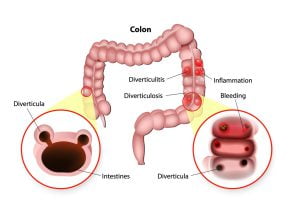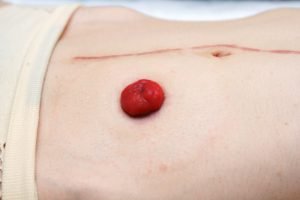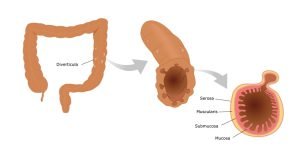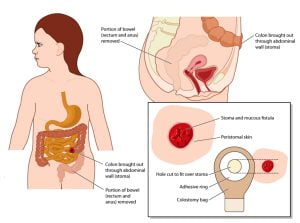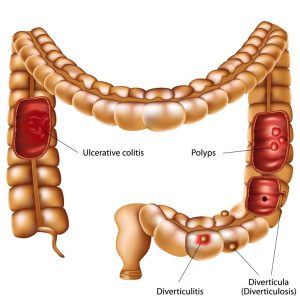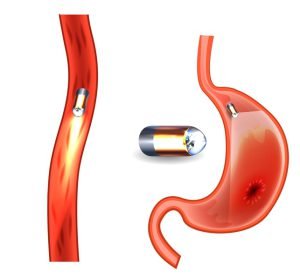Browsing: Diverticulitis Graphics
Comprehensive Information, Resources, and Support on Diverticulitis
Diverticulosis occurs when small, bulging pouches (called diverticula) develop in the digestive tract. When these pouches become inflamed or infected, the condition is called diverticulitis. Experts believe that a low-fiber diet can cause diverticulosis and diverticulitis, though an exact cause of the disease is not known. This may be the reason why people in Asia and Africa have a low incidence of the disease, because diet in these countries is rich in fiber.
A diverticulum (plural is diverticula) is a protrusion of the inner lining of the intestine through the outer muscular layer. The most common site for diverticula to develop is the lower left part of your colon. The inner layer of the intestine pushes through weak spots in the outer lining. The pressure causes them to bulge out, making little pouches or pockets. Mostly, it happens in the colon, which is the lower part of large intestine.
Diverticulitis is an infection when small pockets bulge out in the colon. The diverticula (pocket in colon) become inflamed, or irritated and swollen, and infected and protrude out of the colon wall. Sometimes, diverticular bleeding is also observed when a small blood vessel within the wall of a diverticulum bursts. In severe cases, surgery is the recommended treatment. Bowel resection with primary anastomosis (removal of infected area of colon and sewing the cut ends) and bowel resection with colostomy are two surgical procedures. During bowel resection colostomy, an opening is created in the abdomen which is connected with the bowel to pass out the wastes through it into a pouch. This opening is called a stoma.
Diverticulosis is the development of numerous small pockets or diverticula in the lining of the bowel. These pockets in lower part of the large intestine (colon) or sigmoid colon form while straining during a bowel movement, such as with constipation. Diverticula leads to painful cramps or tenderness in the lower abdomen, chills or fever, etc. Formation of diverticula may develop an abscess, blockage in your colon (caused by scarring), abnormal passageway (fistula) between sections of bowel or the bowel and bladder, peritonitis, etc.
Colostomy is a surgical procedure for the treatment of various problems such as bowel cancer, diverticulitis, anal cancer, bowel incontinence, etc. During a colostomy, one end of the colon (part of the bowel) is diverted out through an opening (stoma) made in the abdominal wall. A pouch is placed at the opening or stoma to collect the waste products which usually pass through the colon and out of the body through the rectum and anus. Diverticula are small, bulging pouches in the lining of digestive system which can be infected or inflamed and leads to diverticulitis. Bowel resection with colostomy is best recommended in severe cases.
Large intestine or colon is a long, hollow tube at the end of digestive tract where the body makes and stores stool. There are a number of diseases that interfere with the normal functioning of the colon including such as benign (noncancerous) or malignant (cancerous) tissue growth. Some common colon diseases are colorectal cancer, colitis, inflammatory bowel diseases, diverticulitis, etc. Diverticulitis is an infection or swelling in the lining of the intestine which results due to formation of small pockets or sacs (in colon), called diverticula. Common causes of diverticulitis are low fiber diet, genetics, smoking, overuse of drugs (aspirin and other nonsteroidal anti-inflammatory drugs (NSAIDs)), etc.
Capsule endoscopy is a procedure that uses a tiny wireless camera to take pictures of your digestive tract. This helps in the diagnosis of GI problems such as esophageal cancer, Crohn’s disease, and diverticulitis. Capsule endoscopy (CE) has recently developed as an important procedure in the investigation pathway of patients with suspected diverticulitis. In a capsule endoscopy, the patient swallows a capsule which contains a camera which views the digestive tract for signs of diverticulitis.
ADVERTISEMENT




